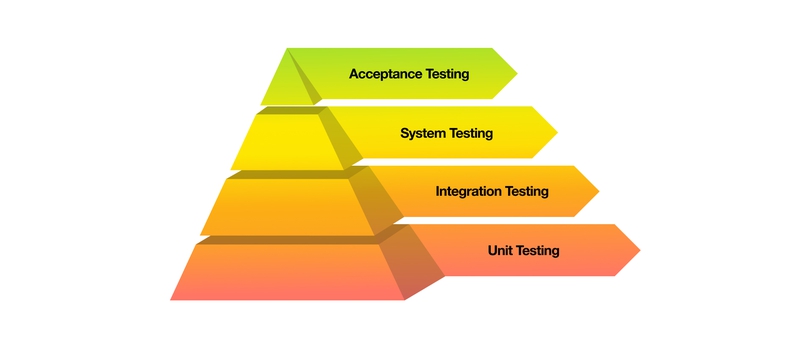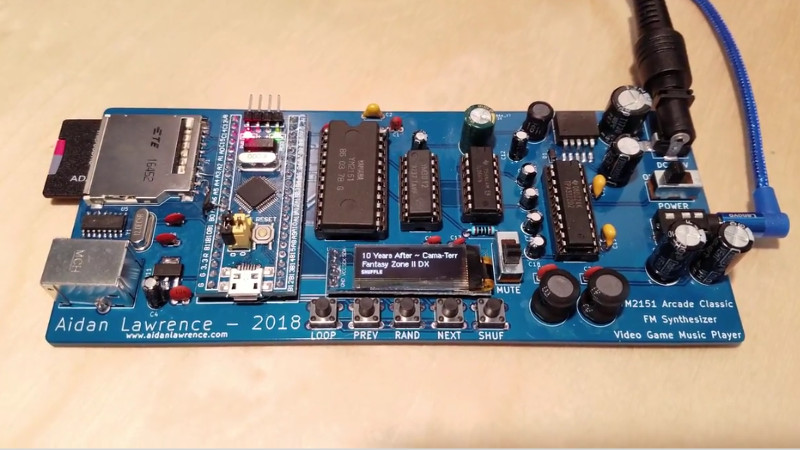The Enduring Legacy of Dedicated Music Players in the Age of the iPhone
In a world dominated by the all-in-one convenience of the smartphone, a curious trend is emerging from the tech community: a powerful, nostalgic revival of the dedicated music player. At the heart of this movement lies the iconic Apple iPod Classic, a device that for many defined an era of digital music. While Apple officially discontinued the last of its click-wheel iPods years ago, its spirit is being resurrected not by Cupertino, but by a passionate community of developers, engineers, and hobbyists. These modern innovators are building open-hardware spiritual successors that capture the 2000s aesthetic and focused user experience, blending retro design with contemporary technology. This resurgence isn’t just about nostalgia; it’s a direct response to the hyper-connected, notification-driven reality of modern devices. It represents a growing desire for digital minimalism, superior audio quality, and the tangible satisfaction of a device built for one purpose: to play music. As we analyze the latest in iPhone news and the ever-expanding Apple ecosystem news, the story of the iPod’s second life offers a compelling counter-narrative about what users truly value in their technology.
An Overview of the iPod Revival Movement
The original iPod lineup was a masterclass in product diversification. From the screenless simplicity of the iPod Shuffle to the compact versatility of the iPod Nano and the video capabilities of the iPod Touch, each device served a specific niche. However, it was the iPod Classic news of its discontinuation in 2014 that marked the true end of an era. The Classic, with its massive storage and iconic click wheel, was the ultimate music library in your pocket. Its demise signaled Apple’s complete pivot towards the iPhone as the central hub for media consumption. This shift, while commercially successful, left a void for users who missed the tactile interface and distraction-free listening experience.
Key Drivers Behind the Modern Revival
The current iPod revival news is fueled by several key factors that go beyond simple sentimentality. These modern projects are a testament to a user base that feels underserved by the current market.
- Digital Minimalism: Many users are actively seeking to disconnect. A dedicated music player allows them to enjoy their library during a run, commute, or at home without the constant barrage of emails, social media alerts, and messages that come with a smartphone. This aligns with broader wellness trends, which are often a topic in Apple health news, emphasizing reduced screen time and mental focus.
- High-Fidelity Audio: The audiophile community has long lamented the compression and streaming quality limitations of many platforms. These open-hardware iPods often incorporate superior Digital-to-Analog Converters (DACs) and support for lossless audio formats like FLAC and ALAC, delivering a listening experience that surpasses what’s typically possible on a standard smartphone without specialized gear. This focus on quality is a stark contrast to the mass-market convenience offered by products like the HomePod or even the high-end AirPods Max, which prioritize wireless connectivity and ecosystem integration.
- The Right to Repair and Tinker: The maker movement champions the ability to open, modify, and repair one’s own devices. These iPod-inspired projects are often fully open-source, from the circuit board schematics to the firmware. This empowers users to replace batteries, upgrade storage with modern SD cards, and even customize the software—a direct philosophical opposite to Apple’s tightly controlled hardware and regular iOS security news updates that lock down the system.
This movement is not just about recreating the past; it’s about improving upon it. By replacing aging, failure-prone hard drives with silent, durable flash storage and running flexible, open-source operating systems like Rockbox, these devices offer a best-of-both-worlds scenario: classic design with modern reliability and features.
A Technical Breakdown: Deconstructing the Modern “Classic”
Building a modern-day iPod Classic from the ground up is a significant technical undertaking that merges retro aesthetics with cutting-edge, accessible components. Unlike Apple’s closed ecosystem, where hardware and software are inextricably linked, these projects embrace modularity and open standards. A deep dive into their architecture reveals a fascinating blend of old and new.

Core Hardware Components
At the heart of these devices is a modern microcontroller, often an ARM-based System on a Chip (SoC) like those from the STM32 family. This is the “brain” that runs the user interface, decodes audio files, and manages the system. Here’s a typical component breakdown:
- Storage: The original iPod Classic’s spinning hard drive is the first thing to go. It’s replaced by a microSD card slot, often using an adapter board. This allows for massive, affordable, and shock-resistant storage—imagine a 1TB iPod Classic, something unimaginable in its heyday.
- Audio Subsystem: This is where these devices truly shine for audiophiles. Instead of relying on the microcontroller’s integrated audio capabilities, many projects use a dedicated, high-quality DAC chip (e.g., from Wolfson, Cirrus Logic, or ESS). This is paired with a clean headphone amplifier circuit to drive a wide range of headphones, from standard earbuds to high-impedance studio monitors. The audio quality can rival or even exceed that of dedicated digital audio players (DAPs) costing hundreds of dollars.
- The “Click Wheel”: Replicating the iconic interface is a major challenge. Most projects achieve this using a circular printed circuit board (PCB) with capacitive touch pads, mimicking the original’s feel. This is combined with physical buttons for Menu, Play/Pause, and Forward/Back, providing the crucial tactile feedback that users loved.
- Display and Battery: The displays are typically off-the-shelf color LCDs that match the resolution and size of the original iPods. For power, modern LiPo batteries are used, offering better energy density and longevity than the original parts. The open nature of the hardware means battery replacement is a simple, user-serviceable task.
Software and User Experience
The software is arguably as important as the hardware. Most of these open-hardware players run Rockbox, a legendary open-source firmware for digital music players. Rockbox offers a wealth of features that the original iPod OS never had, including:
- Broad Codec Support: Native playback of FLAC, Ogg Vorbis, Opus, and many other formats without conversion.
- Advanced Customization: Fully themable user interface, parametric equalizers, crossfade, and gapless playback.
- Extensibility: Rockbox includes plugins for everything from games (like Doom) to calculators and text readers.
This level of control is a world away from the curated experience of Apple Music, which is constantly being updated in the latest iOS updates news. While the Apple ecosystem offers seamless integration with devices like the HomePod mini and Apple Watch, these open-source players offer unparalleled freedom and ownership over one’s media library.
Implications for the Broader Tech Landscape
The re-emergence of iPod-like devices, even within a niche community, sends important signals to the wider consumer technology market. It highlights a growing segment of users who are pushing back against the “one device for everything” philosophy and questioning the trade-offs of the hyper-integrated digital world. This trend has several key implications.
A Counterpoint to the All-Consuming Ecosystem
Apple has masterfully built an ecosystem where every device works together. Your AirPods Pro news might be about how they seamlessly switch from your iPhone to your iPad, and Apple TV marketing news focuses on integration with Apple Fitness+. This is the core of Apple’s strategy. However, the iPod revival movement suggests that for some tasks, deep integration is a bug, not a feature. The beauty of a dedicated music player is its isolation. It doesn’t need to sync with your health data, receive your messages, or connect to your smart home. This philosophy of single-purpose, high-performance devices is something Apple itself still explores with products like the Apple Pencil, which is designed for a specific creative task, or even the upcoming Apple Vision Pro, an immersive device for a new kind of computing. The community’s work suggests there’s a market for more such focused hardware.

The Future of Personal Media Ownership
The rise of streaming has shifted the paradigm from owning music to renting it. While convenient, this model is subject to the whims of licensing agreements, platform changes, and the need for a constant internet connection. Building a modern iPod is an act of reclaiming ownership. It forces a user to curate a personal, local library of files. This act of deliberate collection and organization is a powerful experience that streaming services, with their algorithm-driven discovery, cannot replicate. It’s a personal archive, immune to corporate decisions and connectivity issues. This conversation about data ownership is more relevant than ever, often surfacing in discussions around Apple privacy news and user control over personal information.
Inspiring Mainstream Product Design
While Apple is unlikely to release a new iPod Classic, the design principles and user desires fueling this movement could influence future products. We might see a greater emphasis on tactile controls, less distracting user interfaces in “focus” modes, and more products that champion a single, perfected function. The buzz around potential Vision Pro accessories news, like a rumored Vision Pro wand news, suggests Apple is still thinking deeply about new modes of physical interaction with digital content. The lessons from the iPod’s simplicity—do one thing, and do it perfectly—remain as relevant today as they were in 2001.
Recommendations: Is an iPod Revival Project Right for You?

For those intrigued by the idea of a distraction-free, high-fidelity music experience, exploring the world of modern iPod projects can be incredibly rewarding. However, it’s essential to understand the trade-offs compared to mainstream solutions.
Pros:
- Unmatched Audio Quality: With a focus on high-quality DACs and lossless file support, the audio experience can be phenomenal.
- Total Customization and Control: From the hardware inside to the software themes, you have complete control. You own your device and your music library.
- Distraction-Free Listening: The single-purpose nature of the device promotes a more mindful and immersive listening experience.
- A Rewarding Hobby: For those with a technical inclination, building and customizing one of these devices is a fun and educational project.
Cons and Considerations:
- Technical Barrier to Entry: These are not off-the-shelf products. They often require sourcing parts, soldering, and flashing firmware. It’s a DIY endeavor.
- No Streaming Integration: You are responsible for acquiring and managing your own digital music files. There is no Spotify, Apple Music, or Tidal app.
- Lack of Wireless Convenience: Most projects are built around the classic 3.5mm headphone jack. While some have added Bluetooth, it’s not the primary focus, unlike the latest AirPods news which centers on wireless innovation.
- Potential for Bugs: Open-source software like Rockbox is powerful but can have quirks. It requires a user who is willing to troubleshoot issues occasionally.
Best Practices for Aspiring Builders: If you decide to dive in, start by researching established community projects on platforms like GitHub or Hackaday. Order parts from reputable suppliers and be prepared for a learning curve. Most importantly, start curating your digital music library now. Rip your old CDs to a lossless format like FLAC, or purchase high-resolution albums from online stores. The quality of your source files is just as important as the hardware playing them.
Conclusion: The Beat Goes On
The enduring fascination with the iPod Classic and the rise of open-hardware projects to resurrect it are more than just a fleeting wave of nostalgia. This movement represents a sophisticated critique of modern technology’s trajectory towards constant connectivity and subscription-based media. It champions user ownership, customization, and the value of single-purpose devices that excel at their craft. While the broader market continues to follow the latest Apple Watch news or anticipates new iOS updates news, this dedicated community is preserving a different kind of technological ideal—one where the user is in complete control, the experience is focused, and the connection to the music is paramount. The iPod Classic may be gone from Apple’s product line, but its philosophy is very much alive, beating strongly in the hearts of makers and music lovers around the world.











